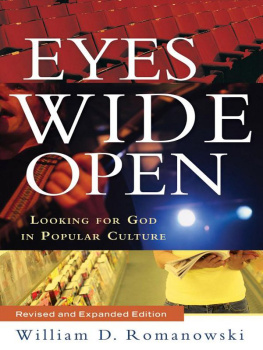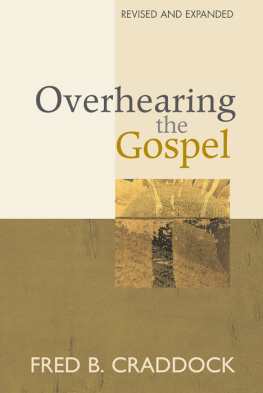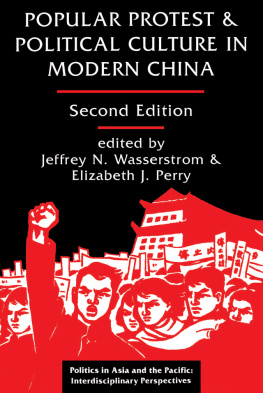William D. Romanowski - Eyes Wide Open: Looking for God in Popular Culture
Here you can read online William D. Romanowski - Eyes Wide Open: Looking for God in Popular Culture full text of the book (entire story) in english for free. Download pdf and epub, get meaning, cover and reviews about this ebook. year: 2007, publisher: Baker Publishing Group, genre: Religion. Description of the work, (preface) as well as reviews are available. Best literature library LitArk.com created for fans of good reading and offers a wide selection of genres:
Romance novel
Science fiction
Adventure
Detective
Science
History
Home and family
Prose
Art
Politics
Computer
Non-fiction
Religion
Business
Children
Humor
Choose a favorite category and find really read worthwhile books. Enjoy immersion in the world of imagination, feel the emotions of the characters or learn something new for yourself, make an fascinating discovery.
- Book:Eyes Wide Open: Looking for God in Popular Culture
- Author:
- Publisher:Baker Publishing Group
- Genre:
- Year:2007
- Rating:5 / 5
- Favourites:Add to favourites
- Your mark:
- 100
- 1
- 2
- 3
- 4
- 5
Eyes Wide Open: Looking for God in Popular Culture: summary, description and annotation
We offer to read an annotation, description, summary or preface (depends on what the author of the book "Eyes Wide Open: Looking for God in Popular Culture" wrote himself). If you haven't found the necessary information about the book — write in the comments, we will try to find it.
Eyes Wide Open: Looking for God in Popular Culture — read online for free the complete book (whole text) full work
Below is the text of the book, divided by pages. System saving the place of the last page read, allows you to conveniently read the book "Eyes Wide Open: Looking for God in Popular Culture" online for free, without having to search again every time where you left off. Put a bookmark, and you can go to the page where you finished reading at any time.
Font size:
Interval:
Bookmark:
EYES
WIDE
OPEN
EYES
WIDE
OPEN
LOOKING FOR GOD IN POPULAR CULTURE
Revised and Expanded Edition
William D. Romanowski

2007 by William D. Romanowski
Published by Brazos Press
a division of Baker Publishing Group
P.O. Box 6287, Grand Rapids, MI 49516-6287
www.brazospress.com
First edition 2001 by William D. Romanowski
Printed in the United States of America
All rights reserved. No part of this publication may be reproduced, stored in a retrieval system, or transmitted in any form or by any meansfor example, electronic, photocopy, recordingwithout the prior written permission of the publisher. The only exception is brief quotations in printed reviews.
Library of Congress Cataloging-in-Publication Data
Romanowski, William D.
Eyes wide open / William D. Romanowski.Rev. and expanded ed.
p. cm.
Includes bibliographical references.
ISBN 10: 1-58743-201-3 (pbk.)
ISBN 978-1-58743-201-9 (pbk.)
1. Popular cultureReligious aspectsChristianity. 2. Popular cultureUnited
States. I. Title
BR526.R646 2007
261.0973dc22 2006021101
Unless otherwise noted, scripture is taken from the HOLY BIBLE, NEW INTERNATIONAL VERSION. NIV. Copyright 1973, 1978, 1984 by International Bible Society. Used by permission of Zondervan. All rights reserved.
Photos were supplied by Photofest, New York, New York.
To my sister and brother
Kim and Michael
and for the next generation
Michael, Lucy, Nellie, Tara,
Nora, Sam, Claire, Max, Spencer,
Abraham, and Molly
CONTENTS
PREFACE TO THE REVISED
AND EXPANDED EDITION
One of the challenges in writing about popular art and culture is its constant movement: films are out of theaters and on DVD in a matter of months, television shows cancelled, and a CD can move up (and down) the Billboard charts with a bullet. For this second edition, Ive updated a number of the illustrations but retained many others that have proven to have legs. My own personal tastes and preferences will become obvious. I like Bruce Springsteens music, for example, and use it to model the kind of analysis that a reader can do likewise with a favorite artist. Since my teaching and research interests are in film studies, I rely on movies for many illustrations. But it is also the case that popular films like Pretty Woman or Titanic (though not personal favorites) have an advantage as illustrations because so many people have seen them, unlike television programs and music that reach more specialized audiences based on age or genre. Also, examining the same artwork in different contexts can show that there are multiple ways of thinking about a film, television program, or music video.
Language is another issue. For convenience, I sometimes use Hollywood as a generic term to refer to the entertainment media, and not just the film industry. Since my original writing, the term Christian has acquired a measure of ambiguity. It has been used in reference to the music of Amy Grant, Jars of Clay, and U2; Christian romance, Anne Lamott books, and the Tim LaHaye/Jerry B. Jenkins Left Behind series; films like The Omega Code and those of Paul Schrader and Martin Scorsese. As an adjective, Christian has taken on multiple meaningsboth positive and pejorativedepending on the source and audience. In thinking about this I found talking about faith perspectives and a cultural orientation more useful and descriptive in most contexts. Even so, I still use the adjective Christian to refer to popular art and cultural orientations that resonate with basic beliefs and assumptions that people claiming the Christian faith adhere to.
Categories that mark social, religious, and cultural distinctions have also been politicized to a great extent. Analyses of a society marked by diversity and the existence of subcultures need to be able to distinguish dominant and subordinate cultures, for example. I read recently that some evangelical Christians with a for us or against us mentality have added mainstream media to a list of terms like liberal and secular humanist that they use to divide groups of people into hard and fast categories of good and evil. It is only realistic to draw observable distinctions where they exist between ideals, beliefs, and assumptions valued by members of a particular Christian subculture, for example, and those of the broader (mainstream) culture. And so I still make use of mainstream to refer to the entertainment industry or the dominant American culture. Marking these differences does not mean that I share the hostile attitudes of any particular group or even their polarized mind-set. I have also tried as much as possible to be specific in naming particular Christian groups like evangelicals, mainline Protestants, and Catholics.
For this second edition I recast the original material to situate it amidst contemporary events and trends and also for a more specific audience. I have added new chapters, reworked, expanded, and updated others keeping in mind those people who are using this study in educational settings, especially liberal arts courses in film, media, and popular culture. Supportive material and documentation has been included so that readers so inclined can follow up these sources as part of their own research and investigation. I refer to critics regularly not just to glean insights into particular artworks but also to show how we can benefit from critical reviews and to demonstrate different kinds of criticism.
Finally, I took this revision as an opportunity to advance an approach to popular art as art. This edition, like the first, is meant to be exploratory and suggestive. I write in that spirit. A reader does not necessarily have to accept my particular faith-informed cultural orientation in order to find something of value in the prospective model presented here. You will have to judge for yourself the viability of my critique of the popular artworks treated in these pages and the cultural perspective they represent. Our society benefits from having people of various faith persuasions participating honestly and intelligently in the cultural conversation. I owe a debt of gratitude to a number of people. Rodney Clapp, for his editorial support and friendship, and Rebecca Cooper, Bobbi Jo Heyboer, and the Brazos team for their good and diligent work on this project. My thanks to Robert Woods for his helpful suggestions toward this second edition, my neighbors (and co-workers) Rick and Michelle Zomer, and my colleagues at Calvin College and especially in the Communication Arts & Sciences department. The Calvin Media Foundation supported production of a three-part video/DVD series based on EyesWide Open for classroom use. Reworking the material for a different medium enhanced my own understanding of popular art. The Calvin College McGregor program provides opportunities for a faculty member and student to work together on a research project during the months of summer. Jennifer VanderHeide worked tirelessly with me on this revised edition. She did outstanding work, dazzling me with her reading, research, and editing skills. Jen, I cant say thanks enough. Donna, Michael, and TaraI love you.
Individuals differ in their capacity to handle challenges to their faith, but each of us in our own way should endeavour to be both distinctive and culturally engaged.
John Coffey, Cambridge Papers
One of the favorites at the Museum of Modern Arts 2003 film series, The Hidden God: Film and Faith, was Groundhog Day (1993). It tells the story of Phil Connors (Bill Murray), an obnoxious Pittsburgh weatherman who is trapped by a Pennsylvania blizzard while covering the annual appearance of Punxsutawney Phil, a groundhog whose sight of his shadow predicts more winter to come. The next morning Connors wakes to the clock radio and Sonny and Cher singing I Got You Babe. He discovers that its February 2nd again. This happens again the next day, and the next, until he learns his lesson, wins the heart of his producer, Rita (Andie MacDowell), and is released from the eternal cycle of repetition, as one reporter put it, adding, Of course, this being an American film, he not only attains spiritual release but also gets the producer into bed.
Next pageFont size:
Interval:
Bookmark:
Similar books «Eyes Wide Open: Looking for God in Popular Culture»
Look at similar books to Eyes Wide Open: Looking for God in Popular Culture. We have selected literature similar in name and meaning in the hope of providing readers with more options to find new, interesting, not yet read works.
Discussion, reviews of the book Eyes Wide Open: Looking for God in Popular Culture and just readers' own opinions. Leave your comments, write what you think about the work, its meaning or the main characters. Specify what exactly you liked and what you didn't like, and why you think so.








